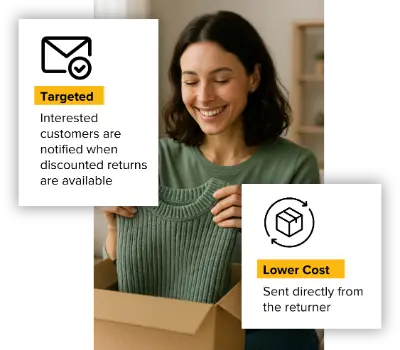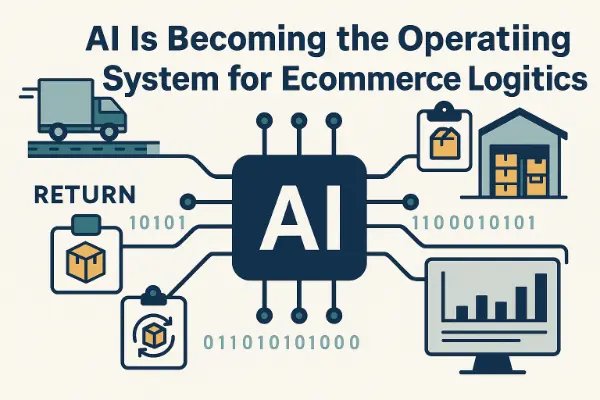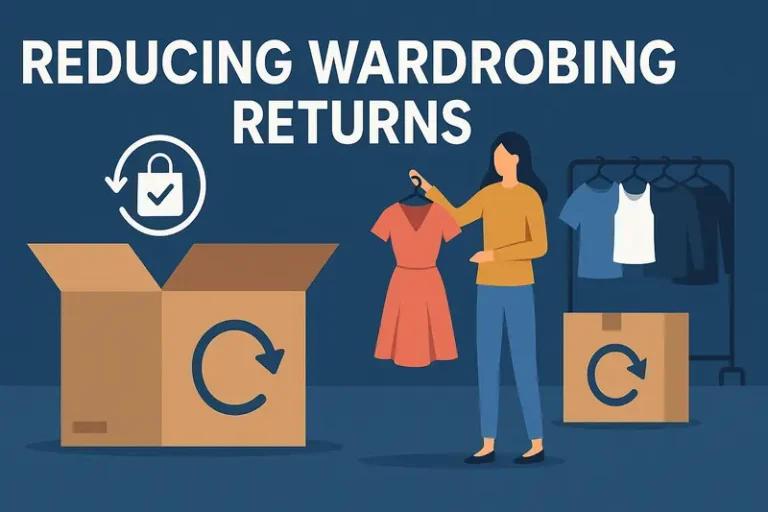Save Money With Ecommerce Shipping Software: Next-Gen Solutions

Last updated on March 19, 2025
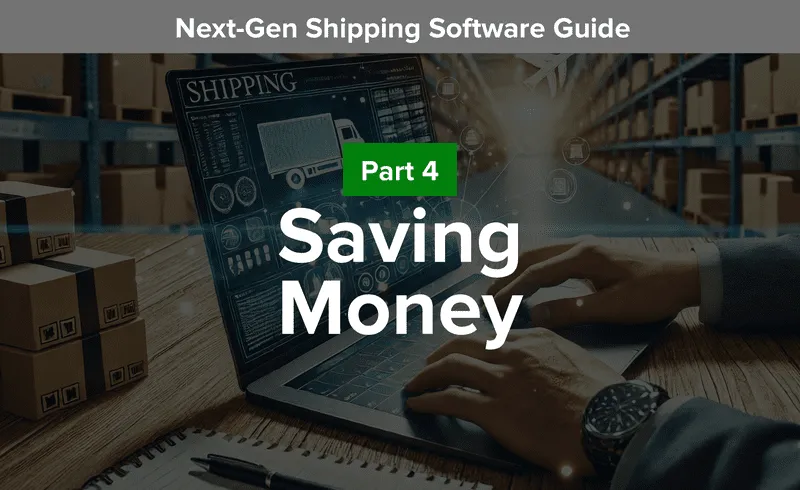
In this article
 7 minutes
7 minutes
- Shipping Costs are One of the Biggest Challenges for Ecommerce Businesses Today
- Calculating Shipping Costs
- Savings: Stay Ahead and Boost Margins Despite Rising Costs
- Pick the Cheapest Label Automatically, Every Time
- Pay the Right Shipping Fees, Even on Complex Orders
- Ease of Use
- Summary: Why Next‑Gen Shipping Software is Essential for Cost Savings
- Frequently Asked Questions
Shipping costs are one of the biggest challenges for ecommerce businesses today, and understanding them is essential to reducing expenses and increasing profit margins. With rising carrier fees, labor expenses, and warehouse leases, every dollar saved makes a difference. Shipping costs can vary greatly depending on several factors, including package weight, dimensions, destination, and shipping method. Traditional shipping software, built for a simpler time, often fails to optimize costs effectively, leaving businesses to absorb unnecessary expenses. By gaining a clear understanding of these costs, businesses can make informed decisions that help reduce shipping expenses and improve overall efficiency.
That’s where next-generation ecommerce shipping software comes in. Designed to reduce shipping costs at every stage, these advanced solutions automate key processes: choosing the most affordable shipping labels, optimizing package sizes to avoid dimensional weight fees, and streamlining fulfillment with minimal manual intervention. By leveraging automation and AI-driven decision-making, merchants can significantly cut costs while improving delivery efficiency.
In this article, we’ll explore how next-gen shipping software helps save money, eliminate cost leakages, and improve warehouse efficiency, giving businesses the competitive edge they need to succeed in ecommerce today.
Let AI Optimize Your Shipping and Boost Profits
Cahoot.ai software selects the best shipping option for every order—saving you time and money automatically. No Human Required.
See AI in ActionShipping Costs are One of the Biggest Challenges for Ecommerce Businesses Today
Shipping costs can be a significant challenge for ecommerce businesses, as they can eat into profit margins and affect customer satisfaction (and revenue) if they skimp on delivery speed. To reduce shipping costs, ecommerce businesses can implement various strategies, such as negotiating with shipping carriers, using discounted shipping supplies, and optimizing packaging. By taking proactive steps to manage shipping expenses, businesses can protect their profit margins and offer competitive shipping rates to their customers.
Calculating Shipping Costs
Calculating shipping costs involves considering all the factors mentioned above. To calculate shipping costs, ecommerce businesses can use shipping calculators, consult with shipping carriers, or connect to carrier APIs for real-time rate shopping to determine the most cost-effective option. It’s essential to factor in all shipping fees, including fuel surcharges, handling fees, delivery area surcharges, and insurance costs, among others. By accurately calculating shipping costs, businesses can set appropriate pricing strategies and avoid unexpected expenses.
Savings: Stay Ahead and Boost Margins Despite Rising Costs
We’ve now identified two key things that next-generation ecommerce shipping software must do – it must simplify operations in today’s complex world, while also boosting your team’s productivity and freeing up their time.
However, the biggest pressure merchants face today is around costs. At a time when major carriers implement annual rate increases (GRIs) and additional surcharges, along with rising worker wages and warehouse leases, Sellers need to be scrappy to save every penny to protect and increase their margins. It can make the difference between going out of business and finding success.
Legacy software does a poor job of unlocking savings because it was built for a world where resource optimization or cost‑cutting was not needed. We believe there are three key areas of the shipping workflow where software must be able to unlock cost savings:
- Does the software pick the cheapest shipping label every time?
- Does the software optimize packaging and shipping costs for large, complex orders?
- Is the software easy to use, with minimal human oversight? Can it work effectively with untrained, seasonal, or part‑time labor?
ShipStation vs. Cahoot: 21x Faster, Real Results
Get the inside scoop on how a leading merchant switched from ShipStation to Cahoot—and what happened next. See it to believe it!
See the 21x DifferencePick the Cheapest Label Automatically, Every Time
Legacy Software – You’ll Never Know if You’re Saving Money
As we’ve seen previously, legacy software requires many manual automation rules to support workflows. But why do merchants go to all this trouble? The answer is simple – to identify the cheapest shipping label on every order.
However, the automations (mapping SKUs and customer addresses to fulfillment locations and carrier services) are simply a means to an end. There is no way to verify whether the rules ensure the cheapest option is picked every time.
To determine that, manual and deep cost comparison analysis is required. The possibility of cost leakage is real, and in a world where customers expect free and fast shipping on every order, every last dollar matters. You need certainty and confidence in the labels your shipping software selects.
Next‑Gen Software – Savings on Every Label
Cahoot’s software removes the maze of complex, human‑defined automation rules. With no rules to manage, you don’t need to worry about optimizing them for maximum savings. The system intelligently factors in all parameters to make the right choice every time.
It’s easy to overlook scenarios when defining rules manually. For example, a one-unit order might weigh less than one pound, qualifying for USPS Ground Advantage. But what if someone orders three units or six units? Cahoot’s system considers all data to make the optimal decision.
You no longer need to perform deep investigations to confirm savings. You can rest assured you’re getting the best label every time.
Pay the Right Shipping Fees, Even on Complex Orders
Legacy Software – Cost Leakages From Human Error
Legacy software leaves packaging decisions to humans, which can lead to cost leakages. Carriers charge based on dimensional weight, and oversized boxes increase costs beyond actual shipping rates.
Without automation or guidance, package selection relies on human judgment, raising the risk of errors.
Next‑Gen Software – Pay the Optimal Rate Every Time
Cahoot’s Intelligent Cartonization ensures optimal box selection for even the most complex orders. You pay only the minimum required shipping rate, and errors are dramatically reduced.
Ease of Use
Legacy Software – Needs Staff to Babysit the Tool
Legacy software is clunky and requires constant manual entry, workflow updates, and oversight. Changes from carriers or product catalogs break automations, demanding dedicated resources to maintain the tool.
Many Sellers hire teams just to configure and maintain their legacy shipping software, increasing staffing costs and diverting talent from more valuable work.
Next‑Gen Software – Anyone Can Use It
Cahoot automates most workflows, adapts to changes automatically, and requires minimal setup. Untrained, part‑time, or seasonal staff can quickly learn and use the system, reducing staffing costs and freeing teams to focus on higher‑value tasks.
Cut Costs with the Smartest Shipping On the Market
Guranteed Savings on EVERY shipment with Cahoot's AI-powered rate shopping and humanless label generation. Even for your complex orders.
Cut Costs TodaySummary: Why Next‑Gen Shipping Software is Essential for Cost Savings
As ecommerce businesses grow, shipping expenses rise. Legacy software leads to cost leakages, inefficient packaging, and manual labor inefficiencies, harming profit margins.
Next‑gen shipping software reduces costs by:
✅ Automatically selecting the cheapest label for every order
✅ Optimizing packaging to avoid dimensional weight fees
✅ Eliminating manual labor with intelligent automation
✅ Enabling untrained or seasonal staff to handle fulfillment easily
By embracing smarter shipping software, merchants can stop overpaying, streamline operations, and reinvest savings into growth.
This was Part 4 of our four‑part Next‑Generation Shipping Software Guide. To learn more, check out the other parts covering the old vs. new world, simplified fulfillment, and warehouse efficiency.
Frequently Asked Questions
What is the best shipping software?
It depends on your needs. Legacy solutions like ShipStation handle basic label printing but have limitations. Next‑gen software offers automation and optimized shipping with built‑in discounted rates.
How is Cahoot able to offer discounted shipping rates for small businesses?
Cahoot aggregates shipping volume across all users and partners with carriers and consolidators to negotiate best‑in‑class discounts, which we pass on to our users.
What shipping carriers does Cahoot work with?
Cahoot works with UPS, FedEx, USPS, DHL, Amazon Shipping, OSM Worldwide, OnTrac, Pitney Bowes, and regional carriers, ensuring you have access to the best shipping options.
How do I integrate Cahoot with my ecommerce platform?
Cahoot integrates with Shopify, WooCommerce, BigCommerce, Amazon, TikTok Shop, Rithum, and more. Native integrations let you start shipping with discounted rates quickly.
How quickly can I save on my shipping costs?
Once you sign up, you get instant access to pre‑negotiated shipping rates, letting you cut expenses from day one.
Do you provide customer support in case I need help?
Yes, Cahoot offers full customer support and an extensive self‑service help center to help with any questions or issues. Our support team is here to assist you with everything from integrating your ecommerce platforms to choosing the best shipping options and navigating packaging costs.
Can ecommerce shipping software handle returns?
Yes, Cahoot ecommerce shipping software can efficiently handle reverse logistics, automated return label generation, return order tracking, and inventory management. For peer‑to‑peer returns—where unused items move directly from one customer to the next—see our Peer‑to‑peer ecommerce returns solution, which cuts return costs by 64%, increases turnaround by 4×, and reduces CO₂ emissions by 54% on average.
Turn Returns Into New Revenue
